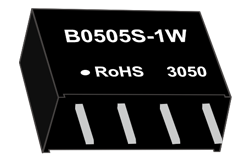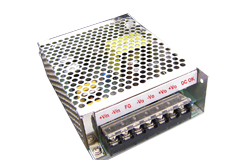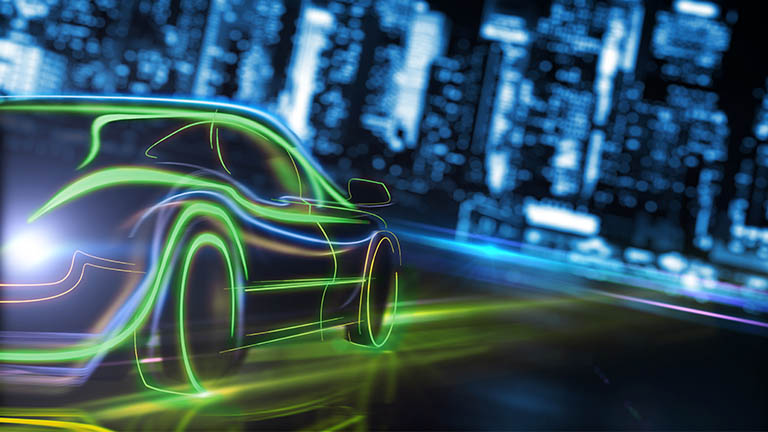news
Exploring the Electric Power Series: Uncovering the Wonders of Electricity
Author: ZYG Power Module Time: 2023-8-26
Electricity is an integral part of our daily lives, powering our homes, devices, and industries. It has become such a fundamental necessity that we often take it for granted. However, behind the flick of a switch lies a fascinating world of science and innovation. In this article, we will delve into the wonders of electricity and explore the electric power series that drives our modern society.
At its most basic level, electricity is the flow of electric charge. This charge is carried by tiny particles called electrons, which exist in all matter. The movement of these electrons creates an electric current, and it is this flow of charges that powers our lives. But how exactly does electricity work?
The fundamental concept behind electricity is based on the behavior of atoms. Every atom consists of a nucleus, containing positively charged protons and neutral neutrons, surrounded by negatively charged electrons. Normally, atoms have an equal number of protons and electrons, making them electrically neutral. However, when electrons are stripped away or added to an atom, it becomes positively or negatively charged, respectively.
Electricity is generated when a potential difference, or voltage, is created between two points. This voltage can be produced by various means, such as chemical reactions, magnetism, or mechanical motion. Once the voltage is established, it pushes the electrons from a region of negative charge (the source) towards a region of positive charge (the load). This flow of electrons is what we commonly refer to as an electric current.
The electric power series is a term used to describe the different sources and forms of electricity. The series begins with the primary sources of electricity generation, such as fossil fuels, nuclear energy, and renewable sources like solar and wind. These sources are used to produce electricity on a larger scale through power plants.
Power plants generate electricity by converting a primary energy source into mechanical energy. For example, in a coal-fired power plant, coal is burned to heat water and produce steam. The steam then drives a turbine, which spins a generator to produce electricity. Similarly, in a nuclear power plant, the heat generated by nuclear reactions is used to produce steam and generate electricity.
Once electricity is generated, it is transmitted through an extensive network of power lines, transformers, and substations. This transmission system ensures that electricity reaches homes, businesses, and industries. However, before it can be used by consumers, the electricity goes through a process called distribution. Distribution involves stepping down the voltage through distribution transformers, making it safe for consumption.
At the consumer level, electricity powers a wide range of devices and appliances. From lighting up our homes to charging our smartphones, electricity is a vital part of our everyday lives. It also plays a critical role in industries, powering machinery, production lines, and facilitating technological advancements.
Electricity has paved the way for countless innovations and advancements. It has revolutionized transportation with electric vehicles, making them a sustainable alternative to fossil fuel-powered cars. Additionally, the development of renewable energy sources has led to a greener and more environmentally friendly approach to electricity generation.

As we rely more on electricity, it becomes crucial to use it efficiently and responsibly. Energy conservation and sustainability are essential to ensure a reliable and environmentally friendly power supply. This can be achieved through practices such as using energy-efficient appliances, adopting renewable energy sources, and promoting awareness about responsible energy consumption.
The electric power series is a fascinating exploration of the wonders of electricity. From its basic principles to its generation, transmission, and utilization, electricity plays a significant role in powering our daily lives and driving our modern society. Understanding the science behind electricity and adopting sustainable practices will pave the way for a brighter and more sustainable future.
Precedente: DM Series DC DC Power Supply manufacture
Prossimo: China ZP Series: A Powerful AC DC Converter for All Your Energy Conversion Needs
informazioni rilevanti
-
2023-4-18
Convertitore CA-CC: conversione della corrente alternata in corrente continua
An AC-DC converter, also known as a rectifier, is a device that converts alternating current (AC) to direct current (DC). This is necessary because many electronic devices, such as computers and televisions, require DC to function properly. AC-DC converters are used in a variety of applications, from household appliances to industrial machinery. The process of converting AC to DC involves several steps. First, the AC voltage is rectified, or converted to a pulsating DC voltage. This pulsating DC voltage is then filtered to remove any remaining AC components, resulting in a pure DC voltage. The resulting DC voltage can be used to power a wide range of electronic devices. There are several different types of AC-DC converters, each with its...
Visualizza dettagli -
2023-5-7
Industrial AC-DC Converter: Powering Your Operations with Efficiency and Reliability
In today's fast-paced industrial world, reliable and efficient power sources are essential to ensure smooth operations and maintain productivity levels. Industrial AC-DC converters are an excellent alternative power source for industrial applications, offering numerous benefits over traditional power supplies. An industrial AC-DC converter is an electronic device that converts alternating current (AC) power into direct current (DC) power. The device is designed to convert high voltage, high current AC power into low voltage, low current DC power, making it ideal for powering sensitive electronic equipment and machinery. One of the main advantages of using an industrial AC-DC converter is its high level of efficiency. Traditional power supplies often waste energy during the conversion process, resulting in high energy bills and...
Visualizza dettagli -
2023-8-24
Efficient AC to DC Converter for LED Lights: A 12V Solution
Introduction LED lights are becoming increasingly popular due to their energy efficiency and long lifespan. However, to power these lights, an efficient AC to DC converter is required. In this article, we will explore a 12V solution for converting AC power to DC power for LED lights. This solution offers high efficiency and reliability, making it an ideal choice for various lighting applications. Background LED lights operate on direct current (DC) power, whereas the power supplied from the electrical grid is in the form of alternating current (AC). Therefore, a converter is necessary to transform the AC power into the required DC power for LED lights to function properly. The efficiency of this conversion process is crucial to minimize energy...
Visualizza dettagli -
2023-7-20
Introducing the SF Series supplier: AC DC Power Supply for All Your Power Needs
In today's digital and interconnected world, power supply plays a critical role in keeping our devices and systems running smoothly. Whether it is for industrial automation, telecommunications, or consumer electronics, having a reliable and efficient power supply is essential. That is where the SF Series comes into play – a comprehensive range of AC DC power supplies that cater to all your power needs. The SF Series is designed and manufactured by a leading global technology company that specializes in power solutions. With years of experience and expertise in the industry, they have developed a reputation for delivering high-quality and innovative products. The SF Series is no exception, offering advanced features and capabilities to meet the demanding requirements of various...
Visualizza dettagli -
2023-5-13
12V AC to DC Converter for LED
Introduction In this article, we will be discussing the 12V AC to DC converter for LED lights. The purpose of this converter is to transform the alternating current (AC) voltage into direct current (DC) voltage in order to power LED lights. What is a 12V AC to DC converter for LED? A 12V AC to DC converter is an electronic device that changes the voltage of an alternating current power source to a direct current power source. This converter is specifically designed for LED lights, which require a constant DC voltage to function properly. Why do we need a 12V AC to DC converter for LED? LED lights are highly popular due to their energy efficiency and long lifespan. However,...
Visualizza dettagli -
2023-7-4
Introducing the Powerful DC DC Converter EX Series
In today's rapidly advancing technological landscape, the demand for efficient power conversion solutions is paramount. To meet this demand, we are proud to introduce the powerful DC DC Converter EX Series. This cutting-edge series is designed to provide high-quality, reliable power conversion for a wide range of applications. With the ever-increasing need for portable electronic devices, it has become crucial to have a compact and efficient power conversion solution. The DC DC Converter EX Series offers just that. Its compact size allows for seamless integration into any design, making it ideal for use in smartphones, tablets, laptops, and other portable devices. Furthermore, its high efficiency ensures minimal power loss during the conversion process, resulting in longer battery life for these...
Visualizza dettagli


















